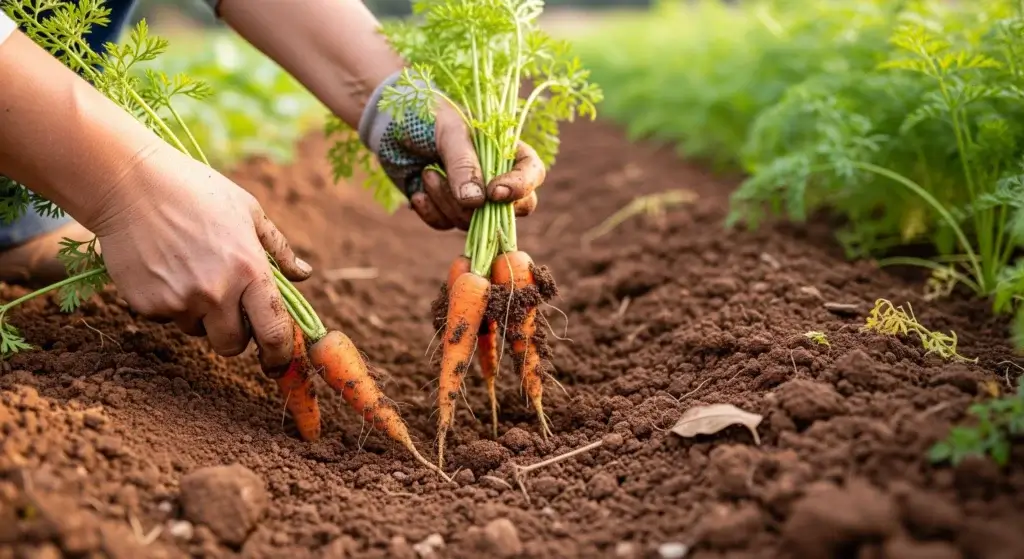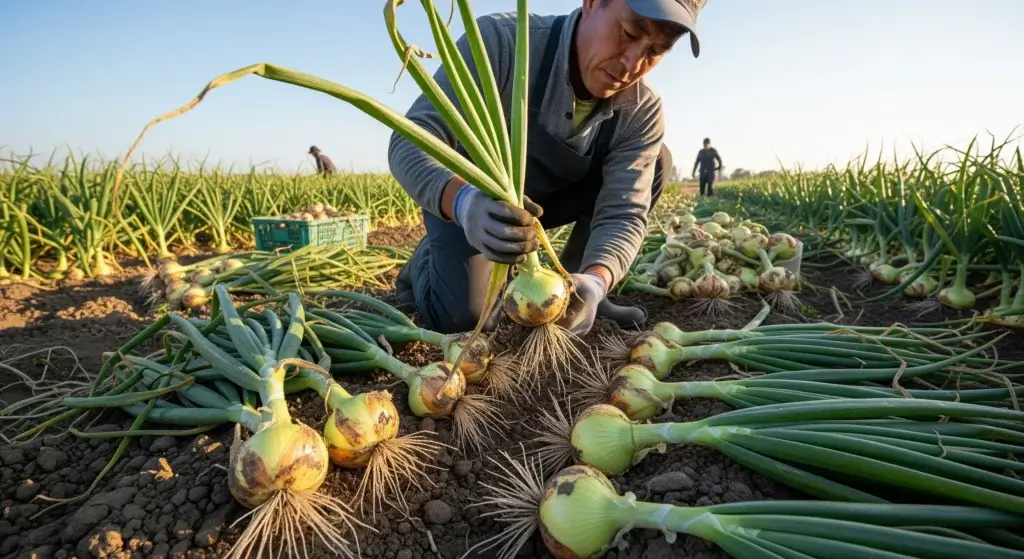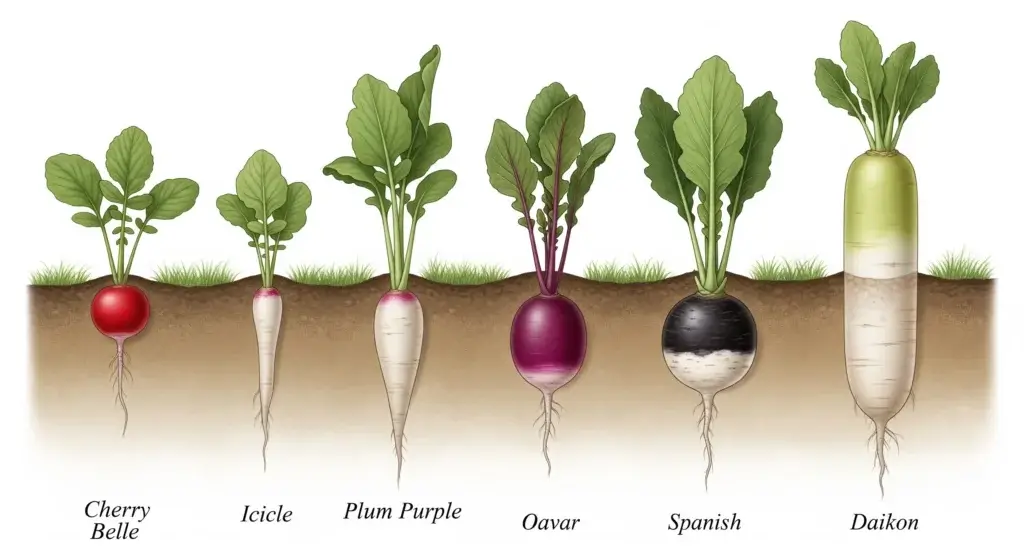
Think garden season ends with summer? Nope. Fall is actually prime time to grow beetroot.
Cooler temps mean less stress, sweeter roots, and fewer pests. In some spots, you can even harvest into winter.
This guide shows you how to crush fall beet planting—from picking the right variety to when and how to harvest.
Whether you’re a garden nerd or just beet-curious, we’ve got your back. Let’s grow more, even when the pumpkin spice hits.
Why Fall is the Unsung Hero for Beetroot Planting
Most veggies love summer. Beets? Not so much.
Too much heat makes them tough, bitter, and ready to bolt (aka, go to seed before you even get a harvest).
Fall, on the other hand, is kind of beet heaven. Here’s why:
1. They get sweeter
Cool soil in fall tells beets to turn starch into sugar.
Result? Sweeter, softer roots. Fall-grown beets usually taste better than spring ones. No joke.
2. Less bolting, more growing
Hot, weird weather in summer can freak beets out and make them bolt.
Fall’s cooler, steady temps keep them chill and focused on root growth—not making flowers.
3. Fewer pests to worry about
By fall, most of the annoying summer bugs have packed it in.
That means fewer chewed leaves and less stress on your seedlings.
4. Perfect weather = happy beets
Beets grow best between 50°F and 70°F (10°C–21°C).
Fall often hits that sweet spot, giving your plants ideal conditions without wild swings in heat.
5. You can harvest for months
With the right setup (like row covers or mulch), you can keep pulling fresh beets well into winter—or even early spring if your zone allows.

When to Plant Your Fall Beetroot?
Timing your fall beet planting is everything. Plant too early and your beets bake in leftover summer heat.
Plant too late, and a hard freeze stops them before they bulk up. Here’s how to get it just right.
The Rule: Plant 8–10 weeks before your first hard frost
That’s the sweet spot.
Your beets need time to grow before the deep cold hits and growth slows to a crawl.
Step 1: Find your first hard frost date
Look it up on a local gardening site or weather app. A “hard frost” means temps hit 28°F (–2°C) or colder for a few hours—cold enough to kill tender plants and stop beet growth.
Step 2: Count backwards
Let’s say your hard frost is around November 15. Count back 8–10 weeks.
That means you should plant between September 5 and 19. Boom—there’s your window.
Step 3: Check your beet variety’s days to maturity (DTM)
Most beets take 50–70 days to grow from seed to harvest. Check your seed packet.
Then, add a buffer of 1–2 weeks because fall days get shorter and cooler, which slows growth. Beets don’t sprint—they jog.
Bonus strategy: Succession planting
Want more than one harvest? Stagger your plantings.
Drop a new round of seeds every 2–3 weeks, starting from your first plant date and stopping about 4 weeks before frost.
That way, you won’t get 20 beets all ready on the same day.

Choosing the Right Beetroot Varieties for Fall Planting
Not all beets are built for fall.
Cooler weather and shorter days call for varieties that can handle the chill without freaking out and going to seed.
Here’s how to pick the right ones.
What to look for:
- Bolt-resistant – These don’t panic and flower when the weather flips.
- Cold-tolerant – They grow well even when it’s hoodie weather.
- Good for storage – If you want to stash some beets for winter eating.
Recommended varieties for fall planting
- ‘Detroit Dark Red’: The classic. Round, deep red roots that grow evenly. Stores well, tastes good, and easy to find. Great for beginners and old-school gardeners alike.
- ‘Early Wonder’: Fast grower. Tasty beets and tasty greens. Likes cool weather and doesn’t take long to mature, which makes it solid for fall.
- ‘Red Ace’: Hybrid superstar. Quick to mature, strong against diseases, and super uniform. If you like predictability in your harvest, this is your beet.
- ‘Touchstone Gold’: Want something other than red? This one stays gold even after cooking and has a sweet, mellow flavor. Grows well in different fall conditions.
- ‘Cylindra’ / ‘Formanova’: Not round—these are long and log-shaped. Easy to slice, perfect for roasting or pickling. Handles cool temps like a champ.
- ‘Bull’s Blood’: This one’s mostly grown for its leaves—dark red and super pretty in salads. The roots are small but still edible. A good pick if you’re all about greens.
Pro tip
Buy from seed companies you trust. Sketchy seeds = weak plants, poor germination, and a whole lot of frustration.
Preparing Your Garden Bed for Fall Beetroot Success
Beets grow underground, so soil matters—a lot.
If the soil’s too hard, too wet, or too packed, your beets won’t bulk up right.
Follow these steps to give them the best start this fall.
Step 1: Pick a sunny spot
Even in fall, beets need at least 6 hours of sun a day. Less light = slower growth and smaller roots.
So skip the shady corners and plant where the sun still hits.
Step 2: Make sure water drains well
Beets hate soggy soil. Wet, heavy ground leads to misshapen roots and rot. Got clay soil? Mix in stuff like:
- Compost
- Aged manure
- Peat moss
Or build a raised bed if your soil drains like a bathtub with the plug in.
Step 3: Loosen that soil deep
Go down at least 8–12 inches (20–30 cm). Beets send taproots straight down, and they need space.
Pull out rocks, hard clumps, and junk that could block their path.
Step 4: Check your soil pH
Beets like their soil slightly acidic to neutral—between 6.0 and 7.0. Use a cheap soil test kit.
- If pH is low, add lime.
- If it’s too high, use elemental sulfur.
Don’t guess. Get the pH right, or your beets won’t grow right.
Step 5: Add organic matter
Mix 2–4 inches (5–10 cm) of compost or well-aged manure into the top 6–8 inches (15–20 cm) of soil.
This helps with:
- Drainage
- Fertility
- Root growth
Do not use fresh manure—it’s too strong and can mess up your seedlings.
Step 6: Watch the nitrogen
Too much nitrogen = huge leafy tops and tiny roots. Not what we want.
If you use fertilizer, go for a balanced one (like 10-10-10), or just stick with compost and skip the guesswork.

Planting Your Beetroot Seeds: Precision for Plump Roots
Beet seeds aren’t just seeds—they’re seedballs. Each one can sprout 2 to 5 plants, which means you’ll get a little beet party in every hole.
That’s why thinning later is a must. But first, let’s plant them right.
Step 1: Make furrows
Use a trowel or the edge of a hoe to make shallow lines in the soil. Keep them about ½ inch deep (that’s like the length of your pinky nail).
Step 2: Space out the rows
Leave 12–18 inches (30–45 cm) between rows. That gives the roots room to grow and you room to walk—or at least crouch without crushing stuff.
Step 3: Drop the seeds
Sow the seeds about 1 inch (2.5 cm) apart in the furrows. Don’t dump them all in one spot like you’re seasoning fries. Aim for an even spread.
Step 4: Cover and water gently
Cover the seeds with ½ inch of soil or compost. Lightly press down so they make good contact with the soil.
Then water—but gently. Use a fine spray or a watering can with a rose head.
A strong blast can wash the seeds away (and you’ll end up with patchy rows and regrets).
Step 5: Keep it moist until they sprout
Keep the soil damp—but not soggy—until the seeds pop.
Germination usually takes 7–14 days, depending on how warm the soil is. Fall soil is usually perfect for this, so you’re in luck.
Essential Care for Your Fall-Planted Beetroot
Once your beets sprout, don’t just walk away.
They need regular care to grow fat and sweet. Here’s what to do—step by step.
1. Thin those seedlings
Once your beet seedlings hit 2–4 inches tall and have 1–2 sets of real leaves, it’s go time.
- Thin to 3–4 inches apart.
- Use scissors. Snip the extras at the soil line.
- Don’t pull them—it can mess up the roots of the keepers.
More space = bigger, better beets. Always.
2. Keep the water coming
Beets need about 1 inch (2.5 cm) of water a week. Too little? Roots get woody or split.
- Too much all at once? Same deal.
- Keep soil evenly moist.
In cooler fall weather, you might water less often—but don’t let the soil dry out.
No one likes dry, stringy beets.
3. Weeds? Rip ‘em out
Weeds steal water, light, and nutrients. Beets don’t like competition.
- Hand-pull weeds, especially when plants are young.
- Be gentle—beet roots are shallow and easy to disturb.
4. Mulch = Your secret weapon
Once seedlings settle in, mulch around them with 2–3 inches of:
- Straw
- Shredded leaves
- Grass clippings
Why? Because mulch keeps soil moist, blocks weeds, and helps hold warmth as temps drop.
5. Fertilize
If you prepped your soil with compost, you’re probably good. But if growth stalls:
- Use a balanced organic fertilizer that’s low in nitrogen.
- Too much nitrogen = lots of leafy tops, tiny roots. Not the goal.
Apply after thinning, not before.

Protecting Your Fall Beetroot from Winter Chill
If you live somewhere cold and want your beets to last past fall, you’ll need to help them handle the chill.
Here’s how to keep your beets cozy and harvesting longer.
Cold frames
Think of a cold frame as a mini greenhouse—a bottomless box with a clear lid.
It traps the sun’s heat and creates a warmer little zone for your beets. This can add weeks or even months to your growing season.
Row covers
These are lightweight fabrics you either drape right over your plants (floating) or stretch over hoops.
They block light frost, wind, and some bugs but still let sun and rain through. Perfect for a bit of extra frost protection.
Heavy mulch
In places where winters are mild, pile on 6–12 inches of straw, leaves, or wood chips over your beet patch before the hard freeze hits.
This blankets the roots underground, letting you harvest fresh beets all winter long without digging them up early.
Cloches
These are little bell-shaped covers for single plants.
If you only have a few beets or want to baby one spot, pop a cloche over them to stop frost damage.
What to expect
These tricks protect beets down to about 20°F (–6°C).
If it gets colder, better to pull your beets before the deep freeze and store them inside.
Wrap-Up: Fall Is Beet Season—Don’t Miss It
Summer might be ending, but your garden doesn’t have to. Fall is prime time for growing beets—cool temps make them sweeter, and there’s way less pest drama.
Plant at the right time, pick the right variety, prep your soil, and give them steady care.
Throw on a cold frame or some mulch if it gets frosty.
The reward? Pulling fresh, sweet beets when most gardens are done.
So don’t pack up your tools—grab your seeds and get planting. Fall beets are the real MVP.



